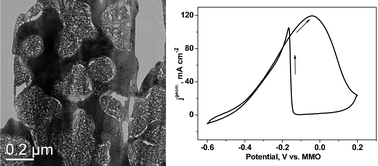Ultrafine nanoporous Cu–Pd alloys with superior catalytic activities towards electro-oxidation of methanol and ethanol in alkaline media
Abstract
In this work, the dealloying of ternary Mg–Cu–Pd alloys and formation of nanoporous Cu–Pd alloys have been investigated using


 Please wait while we load your content...
Please wait while we load your content...